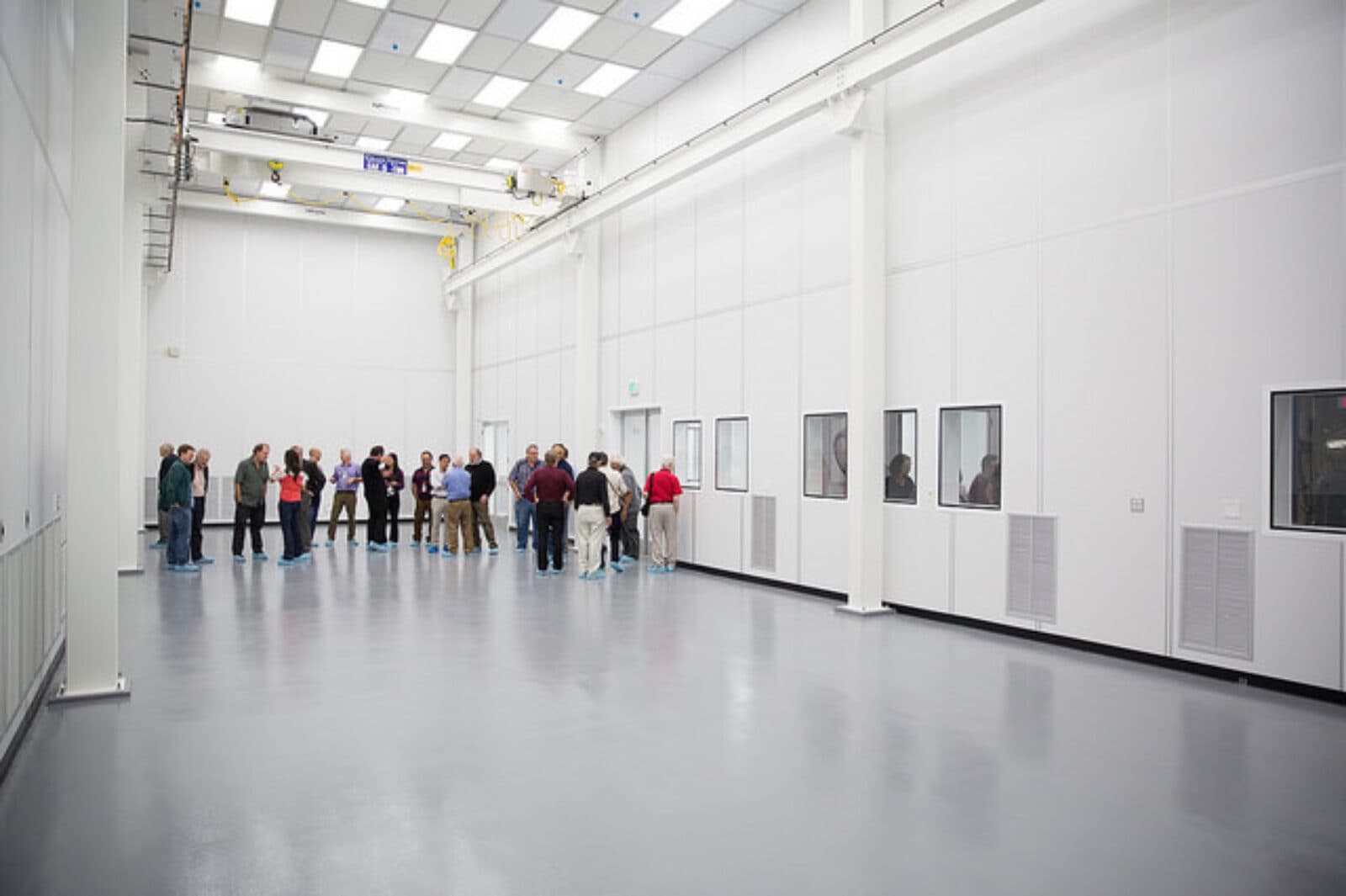Construction of LSST Clean Room at SLAC Completed

May 14, 2015
(Originally published by Stanford University)

Engineers and scientists at the Department of Energy’s Stanford Linear Accelerator Center Center (SLAC) National Accelerator Laboratory working on the Large Synoptic Survey Telescope (LSST) gathered on May 8 to celebrate the completion of a new clean room, where they will soon begin to assemble the largest digital camera ever built.
Beginning in 2022, LSST’s 3,200-megapixel camera will take snapshots of the night sky with unparalleled detail. Over its planned 10 years of operations, it will create an archive of tens of billions of cosmic objects and their movements – a treasure trove for researchers studying all kinds of astronomical phenomena.
“The completion of the clean room is a big milestone for the lab,” said LSST Director Steven Kahn, the Cassius Lamb Kirk Professor in the Natural Sciences in the Kavli Institute for Particle Astrophysics and Cosmology (KIPAC) and SLAC at Stanford University. “It’s the first major piece of LSST infrastructure here at SLAC.” The achievement comes only weeks after another project milestone: the beginning of construction for the telescope at its future site in Chile.
Having a clean environment for the assembly of LSST’s camera is necessary because any dust settling on the image sensors would degrade the quality of the precision device. The air inside the new facility is about 1,000 times “cleaner” than ordinary air. The main 1,875 square feet work space has a ceiling height of 24 feet so that the approximately 10-feet-long camera body can be mounted vertically for optical alignment and final testing.
“Getting the clean room built took a lot of work by many people,” said Aaron Roodman, SLAC’s system scientist for the LSST camera integration and testing and also a member of KIPAC. “It’s due to their efforts that we got it done in only eight months.”
The day of the opening ceremony turned out to be the only day that visitors were allowed to go inside without an escort, special training and “bunny suits,” the full-body gear worn in clean rooms.
Among the attendees were researchers of the LUX-ZEPLIN dark matter project, who are building a test stand for their experiment right next to LSST’s clean room. Both facilities are located at SLAC’s “Interaction Region 2,” the former home of the BaBar particle physics experiment at the PEP-II collider.
“It’s very exciting to have our clean room in this location,” said SLAC’s Nadine Kurita, project manager for LSST’s camera and also a member of KIPAC. “Many of us worked on BaBar and PEP-II before and spent endless nights here, and now we’re coming back to put the camera together.”
Researchers can now begin to fill the new facility with life. Over the next few months, they will install work benches and bring in some of their equipment. The camera assembly will be spread out over the next four years.